Are you ready to explore one of Cuba’s most breathtaking and hidden natural gems? The Topes de Collantes Natural Park, located in the heart of the Escambray Mountains and just a short drive from the historic town of Trinidad, is an extraordinary destination for nature enthusiasts and adventure seekers. The park is a haven of lush tropical forests, crystal-clear rivers, and spectacular waterfalls, offering visitors a peaceful retreat surrounded by Cuba’s untamed beauty. Its unique microclimate, with temperatures averaging around 21°C, provides a welcome break from the intense heat of the coastal areas. Perched 700 meters above sea level, the park’s cool air and breathtaking views make it an ideal place to relax and reconnect with nature.
Topes de Collantes offers a variety of activities for all types of travelers. Whether you’re an avid hiker looking to explore its scenic trails, a wildlife enthusiast eager to spot native species, or simply someone in need of a peaceful getaway, the park has something for everyone. The hiking trails range from easy walks to more challenging treks, leading you through dense forests, across rivers, and to hidden spots where you can enjoy Cuba’s most stunning landscapes. For a truly unforgettable experience, immerse yourself in the tranquility of this lush paradise and discover the charm of Cuba beyond its beaches.
So, grab your hiking boots and a swimsuit, and let’s dive into the wild beauty of Topes de Collantes!
On the page:
1. Why Visit Topes de Collantes?
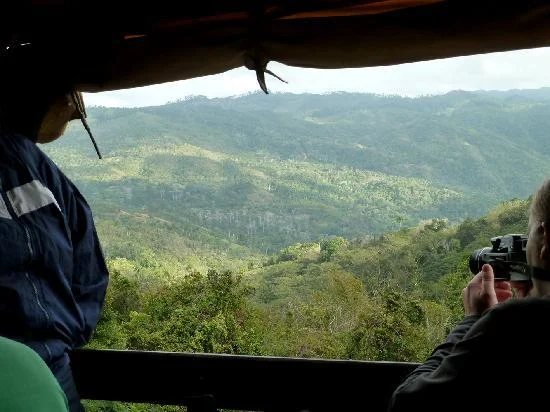
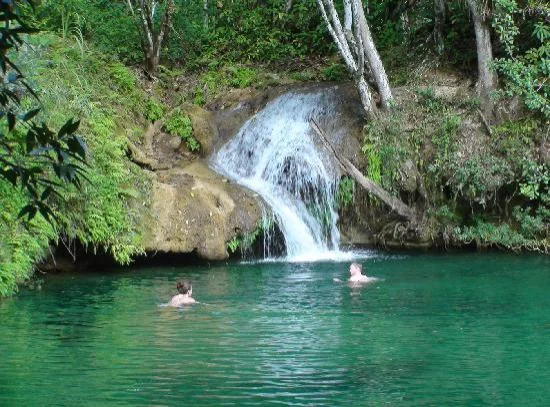
Topes de Collantes is a must-visit destination for those seeking to explore Cuba’s lesser-known natural beauty. The park is a sanctuary of breathtaking landscapes, ranging from lush forests to pristine rivers, all set against the dramatic backdrop of the Escambray Mountains. Its cooler microclimate and high elevation provide a refreshing contrast to Cuba’s often sweltering coastal heat, making it an ideal escape for those looking to experience a more tranquil side of the island.
One of the park’s highlights is its rich biodiversity. The unique conditions here support an array of rare and endemic species, including Cuban pines, giant ferns, and colorful orchids that paint the landscape in vibrant hues. For nature lovers and wildlife enthusiasts, Topes de Collantes offers an intimate glimpse into Cuba’s wilderness, far removed from the typical beach resorts.
Top Recommendation: If you’re visiting during the hot summer months, Topes de Collantes will offer a cool, refreshing retreat. The park is home to several natural swimming pools, perfect for taking a dip after a day of hiking. Don’t forget to pack your swimsuit, as these serene pools provide a perfect way to relax and cool down in the heart of nature. Whether you’re hiking, swimming, or simply enjoying the scenery, Topes de Collantes promises an unforgettable, rejuvenating experience.
2. Must-See Trails and Natural Wonders
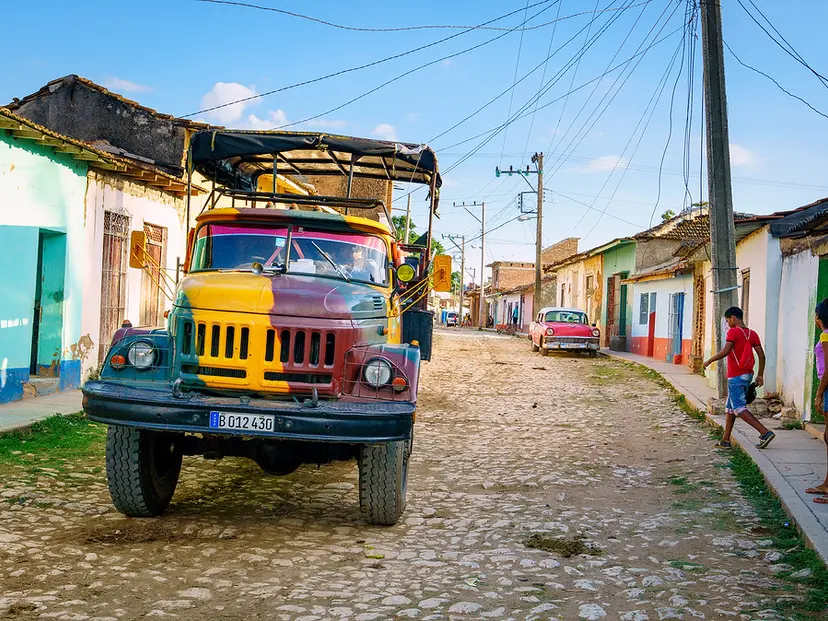
Sendero Vegas Grandes
Sendero Vegas Grandes is one of the most popular and scenic hiking trails in Topes de Collantes, offering an immersive experience in the park’s lush wilderness. This moderate 4-kilometer loop trail winds its way through dense forests, passing by babbling streams and stunning viewpoints along the way. As you walk, you’ll be surrounded by towering trees and a rich tapestry of greenery that creates a sense of stepping back in time to a world untouched by modernity.
The trail leads you to the highlight of the hike: a breathtaking waterfall. The sight and sound of the water cascading down into the natural pools below provide a peaceful and awe-inspiring moment, perfect for a rest or a photo opportunity. Depending on your pace, the hike takes about two hours, but with so many beautiful spots to pause and enjoy, it’s easy to spend more time soaking in the beauty around you.
The diversity of the landscape is another feature of Sendero Vegas Grandes—expect to encounter a variety of plant life, including giant ferns and orchids, adding vibrant colors to the lush greenery. The feeling of being in an almost prehistoric setting, surrounded by such unspoiled natural beauty, makes this hike a must-do for nature lovers visiting Topes de Collantes. Whether you’re a seasoned hiker or a casual adventurer, this trail offers a perfect blend of natural wonder and moderate challenge.
- Difficulty: Moderate
- Length: 4 km (loop)
- Highlights: Dense forest, waterfalls, and scenic viewpoints
Pro Tip: Wear comfortable, sturdy walking shoes, as the path can get slippery near the waterfalls. For added traction, trekking poles are helpful for stability on the steeper sections.
Salto del Caburní
For adventurers looking for a more challenging and rewarding hike, the Salto del Caburní trail is an absolute must. This 6-kilometer round-trip trek is a bit more strenuous than others in Topes de Collantes, but the effort is more than worth it when you reach the stunning Salto del Caburní waterfall. Standing at over 62 meters tall, this majestic waterfall is one of the highest in the park, with water tumbling down into a natural pool below, creating a mesmerizing sight and sound.
As you navigate the trail, you’ll encounter a variety of terrains, from steep slopes to rocky paths, making it a more physically demanding hike. However, the lush surroundings and the promise of the waterfall keep you motivated along the way. The trail offers a sense of solitude and immersion in nature, with towering trees, dense underbrush, and occasional glimpses of the breathtaking views as you descend into the valley.
Once you arrive at the base of the Salto del Caburní, the waterfall’s beauty is sure to take your breath away. It’s the perfect spot to take a break and cool off—jump into the refreshing swimming hole at the base of the waterfall for a much-needed, invigorating dip after the hike. Whether you’re seeking a challenge or simply craving the beauty of nature at its most raw and unspoiled, the Salto del Caburní trail promises an unforgettable experience in Topes de Collantes.
- Difficulty: Challenging
- Length: 6 km (round-trip)
- Highlights: Tall waterfall, swimming hole
Recommendation: Start early in the morning to beat the crowds and bring plenty of water for the journey. While the trail is tough, the view of the waterfall in its full splendor is worth every step.
La Batata Trail
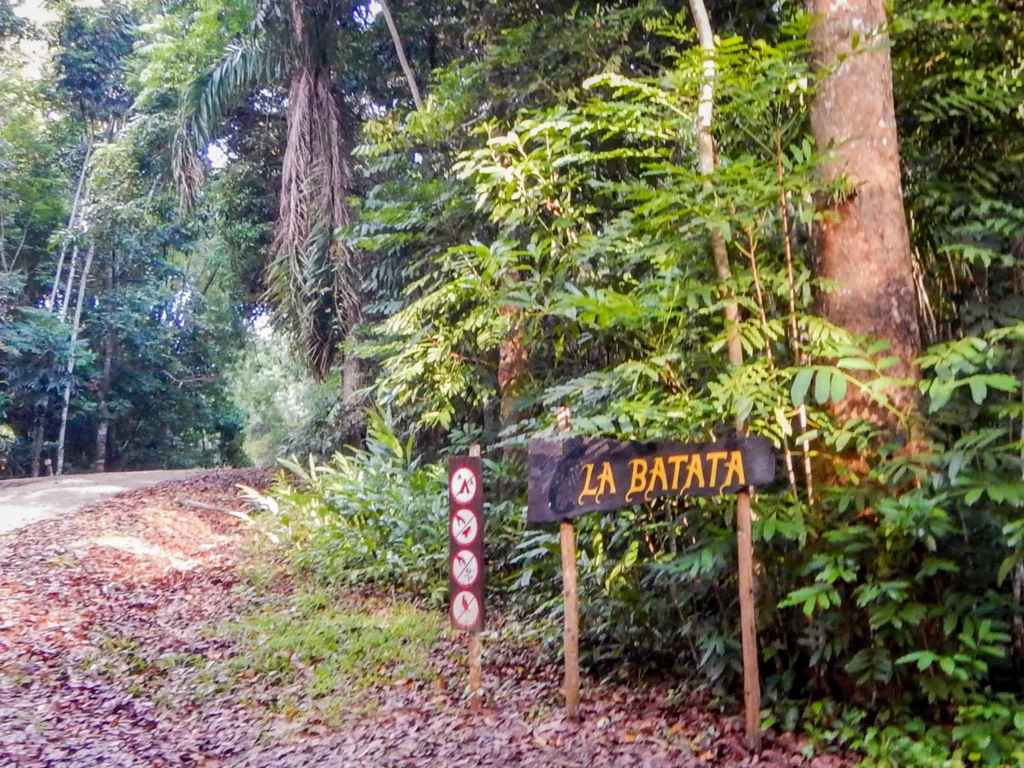
For those seeking a less strenuous yet equally enchanting hike, the Batata Trail offers a perfect balance of beauty and accessibility. This trail is less challenging than the Salto del Caburní, making it a great option for hikers of all levels, but it still provides an immersive journey through a diverse range of microhabitats. Spanning approximately three hours, the Batata Trail guides you through lush woodlands, tranquil streams, and open valleys, showcasing the varied landscapes of Topes de Collantes.
Along the way, you’ll encounter several shallow pools perfect for a refreshing swim, allowing you to cool off and enjoy the peaceful surroundings. These pools, scattered throughout the trail, offer the ideal spots to take a break, relax, and even take a dip in the crystal-clear water. The trail’s ease of access, combined with the natural beauty, makes it a perfect outing for families or those looking for a leisurely adventure with scenic rewards.
The name “Batata,” which means sweet potato in Spanish, refers to the nutritious plants that grow along the trail. As you hike, you’ll notice the rich vegetation and the presence of these plants, adding a unique touch to the experience. Whether you’re enjoying the wildlife, the peaceful swim spots, or the opportunity to observe Cuba’s diverse ecosystems, the Batata Trail provides a delightful escape into nature, offering both relaxation and adventure in equal measure.
- Difficulty: Moderate
- Length: 3.5 km (loop)
- Highlights: Caves, swimming pools, diverse vegetation
Insider Tip: This trail is perfect for birdwatching, especially during early mornings or late afternoons. Bring binoculars if you can, as you’re likely to spot endemic species such as the Cuban trogon.
Related: 5 beautiful beaches in Brazil: You’ll be amazed
3. What to Bring
Exploring the natural wonders of Topes de Collantes requires some careful preparation to ensure your adventure is safe, enjoyable, and memorable. Whether you’re embarking on a short trail or a longer, more challenging hike, having the right gear will make a significant difference in your experience. Here are some essential items to bring when visiting this stunning natural park:
Hiking Shoes
Topes de Collantes is known for its rugged, hilly terrain, with muddy paths and uneven ground in some areas. Durable hiking shoes with good tread are essential for navigating the trails safely. Whether you’re trekking through dense forest or crossing rocky paths, comfortable shoes with ankle support will help you maintain balance and avoid injury. Look for shoes that are water-resistant or waterproof to handle occasional streams or rainfall, especially if you’re hiking during Cuba’s wet season.
Swimsuit and Towel
Many of the park’s trails lead to picturesque waterfalls, natural pools, and serene swimming spots. These cool, refreshing pools provide a great opportunity to take a dip after a hike, especially if you’re visiting in the warmer months. Make sure to pack a swimsuit, towel, and even a change of clothes to fully enjoy these beautiful natural swimming holes. A quick swim in the clear waters of a waterfall or stream is one of the most rewarding aspects of hiking in Topes de Collantes, so don’t miss the chance to cool off in nature’s tranquil pools.
Water and Snacks
Hiking in Topes de Collantes can take anywhere from two to four hours, depending on the trail you choose. It’s important to stay hydrated and fueled during your trek, especially on steeper paths. Carry enough water to keep you hydrated throughout the hike, and consider bringing energy-packed snacks such as granola bars, fruit, or nuts. While the park offers some natural beauty, it doesn’t have many places to purchase food or water, so come prepared with everything you’ll need. Packing a reusable water bottle can also reduce plastic waste and help you stay environmentally conscious.
Sunscreen and Bug Spray
Although the cooler microclimate of Topes de Collantes offers relief from Cuba’s typical heat, the sun can still be quite strong at higher elevations. It’s essential to bring sunscreen with a high SPF to protect your skin from harmful UV rays, especially if you’re planning to spend a few hours outdoors. Additionally, Topes de Collantes is home to plenty of vegetation and moisture, which makes it a perfect environment for mosquitoes and other insects. Be sure to pack insect repellent to keep these pests at bay, especially when walking through shaded areas or near water. Reapplying sunscreen and bug spray throughout your hike will help ensure a comfortable experience.
Binoculars and Camera
Topes de Collantes is a haven for nature lovers and wildlife enthusiasts. The park is home to a rich variety of flora and fauna, including endemic species like orchids, Cuban pines, and rare birds. To make the most of your visit, bring a pair of binoculars to spot wildlife from a distance without disturbing their natural habitat. Additionally, don’t forget your camera to capture the breathtaking landscapes, majestic waterfalls, and colorful wildlife you encounter along the way. The park offers stunning vistas and picturesque scenery, so having a camera on hand ensures you can take home lasting memories.
Fun Fact:
Topes de Collantes is part of the larger UNESCO Biosphere Reserve known as the “Ciénaga de Zapata Biosphere Reserve.” This designation highlights the park’s ecological significance and its protection as one of Cuba’s most biodiverse and environmentally protected areas. By visiting Topes de Collantes, you’re not just exploring a beautiful part of the island; you’re also contributing to the preservation of this vital ecosystem.
By coming well-prepared with these essentials, you can ensure a safe, comfortable, and unforgettable adventure in Topes de Collantes, one of Cuba’s most captivating and ecologically rich destinations.
4. Nature and Wildlife in Topes de Collantes
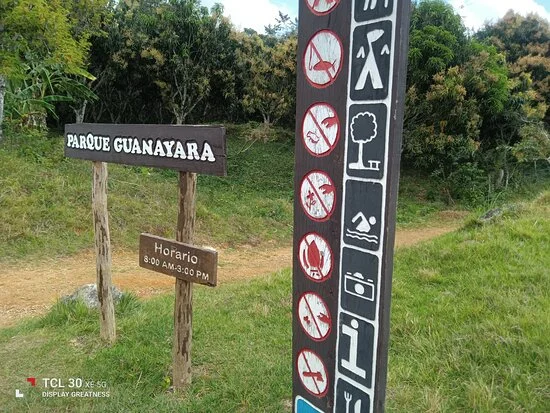
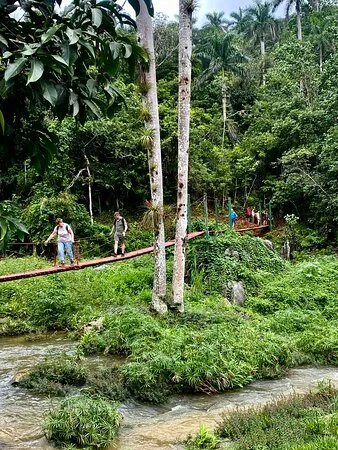
The park is home to a rich array of flora and fauna, some of which are unique to Cuba. You might encounter species like the Cuban solenodon, an unusual, small mammal native to the island, or the Cuban tody, a vibrant little bird found only in Cuba’s forests. The lush greenery includes Cuban pines, eucalyptus trees, giant ferns, and various orchids.
The diversity in plant life creates distinct habitats for animals, making Topes de Collantes a paradise for wildlife enthusiasts and photographers. Keep an eye out for the Cuban trogon, the country’s national bird, known for its iridescent plumage and unique vocalizations.
Suggestion: If you’re passionate about photography, consider joining a local nature tour where guides can help you spot hard-to-find wildlife. These tours provide insight into the ecosystems and are usually led by knowledgeable guides who understand the park’s biodiversity intimately.
5. Practical Information and Tips for Visiting
- Getting There: The easiest way to reach Topes de Collantes is by taxi or rental car from Trinidad, which is only about 20 kilometers away. You can also join a guided tour from Trinidad or other major cities.
- Entrance Fees: Admission to the park is generally around 10-15 USD, depending on the trails or activities you choose.
- Best Time to Visit: The ideal time to explore is during Cuba’s dry season (November to April), when trails are less muddy, and temperatures are pleasant for hiking.
Traveler’s Tip: If you’re staying in Trinidad, it’s worth allocating at least two days for Topes de Collantes. This will allow you to experience multiple trails without feeling rushed.
6. Supporting Local Conservation Efforts
By visiting Topes de Collantes, you’re also contributing to the park’s ongoing conservation. The fees from park admissions help fund efforts to protect the fragile ecosystems within the park. Additionally, supporting local guides and eco-friendly businesses helps create sustainable tourism, ensuring this natural paradise remains preserved for generations.
Suggestion: For a truly immersive experience, consider booking an eco-friendly stay in Trinidad or Santa Clara, where some accommodations are committed to sustainable practices. This way, your visit has an even greater positive impact on the region’s environment and communities.
Final Thoughts
Topes de Collantes is a hidden gem for those seeking an escape into nature. Its wild landscapes, teeming with biodiversity and breathtaking beauty, offer a glimpse of Cuba that’s worlds apart from the vibrant cities and beaches. Whether you’re marveling at towering waterfalls, swimming in natural pools, or simply wandering through verdant forests, the park’s trails bring you face-to-face with some of the most captivating sights and sounds in Cuba.
Visiting Topes de Collantes is not just a hike—it’s a journey into the heart of Cuba’s natural soul. So, if you’re ready for an unforgettable adventure, put Topes de Collantes at the top of your list. Happy exploring!
Sources:
- UNESCO Biosphere Reserves
- National Parks in Cuba – Cuba Travel
- Hiking in Topes de Collantes – MyCubanAdventure.com



